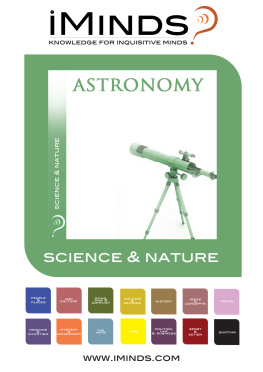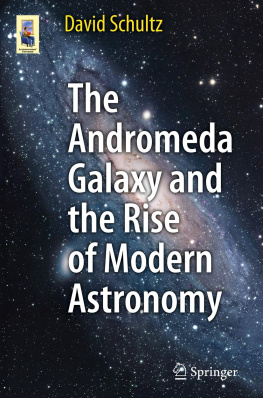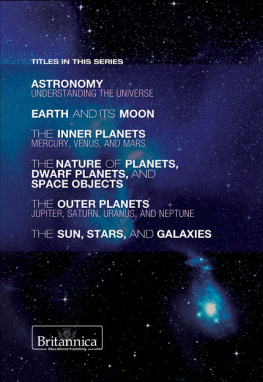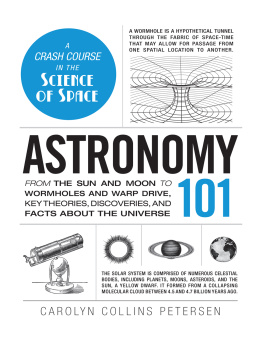ASTRONOMY
UNDERSTANDING THE UNIVERSE
the solar system
ASTRONOMY
UNDERSTANDING THE UNIVERSE
Edited by Sherman Hollar

Published in 2012 by Britannica Educational Publishing
(a trademark of Encyclopdia Britannica, Inc.)
in association with Rosen Educational Services, LLC
29 East 21st Street, New York, NY 10010.
Copyright 2012 Encyclopdia Britannica, Inc. Britannica, Encyclopdia Britannica, and the Thistle logo are registered trademarks of Encyclopdia Britannica, Inc. All rights reserved.
Rosen Educational Services materials copyright 2012 Rosen Educational Services, LLC.
All rights reserved.
Distributed exclusively by Rosen Educational Services.
For a listing of additional Britannica Educational Publishing titles, call toll free (800) 237-9932.
First Edition
Britannica Educational Publishing
Michael I. Levy: Executive Editor, Encyclopdia Britannica
J.E. Luebering: Director, Core Reference Group, Encyclopdia Britannica
Adam Augustyn: Assistant Manager, Encyclopdia Britannica
Anthony L. Green: Editor, Comptons by Britannica
Michael Anderson: Senior Editor, Comptons by Britannica
Sherman Hollar: Associate Editor, Comptons by Britannica
Marilyn L. Barton: Senior Coordinator, Production Control
Steven Bosco: Director, Editorial Technologies
Lisa S. Braucher: Senior Producer and Data Editor
Yvette Charboneau: Senior Copy Editor
Kathy Nakamura: Manager, Media Acquisition
Rosen Educational Services
Alexandra Hanson-Harding: Editor
Nelson S: Art Director
Cindy Reiman: Photography Manager
Matthew Cauli: Designer, Cover Design
Introduction by Alexandra Hanson-Harding
Library of Congress Cataloging-in-Publication Data
Astronomy : understanding the universe / edited by Sherman Hollar.1st ed.
p. cm. (The solar systemw)
In association with Britannica Educational Publishing, Rosen Educational Services.
Includes bibliographical references and index.
ISBN 978-1-61530-569-8 (eBook)
1. Astronomy--Juvenile literature. I. Hollar, Sherman.
QB46.A88 2012
520dc22
2011003489
On the cover, page : An open cluster of stars in the northern constellation of Perseus.
Shutterstock.com
Pages www.istockphoto.com/Sergii Tsololo; remaining interior background image www.istockphoto.com/Manfred Konrad; back cover Shutterstock.com
CONTENTS






introduction

M illions of lucky people in Africa and Asia had the opportunity to witness an unusual celestial event on January 15, 2010. Using special dark glasses, pinhole cameras, and other devices so that they would not be blinded by the Sun, they saw a rare annular solar eclipse. This kind of eclipse takes place when the Sun is closest to Earth and the Moon is farthest away, so the Moon does not completely cover the Sun. This means that at the peak phase of the eclipse the rim of the Sun is visible all around the disk of the Moon. The peak phase of the January 15 eclipse lasted 11 minutes and 8 seconds. Such a duration for an annular solar eclipse will not be exceeded until the year 3043. The subject of eclipses is just one of the many fascinating topics you will learn more about in this volume.
Early Egyptians and Chinese used their eyes to study the annual patterns of the sky carefully enough to make accurate calendars. During the 2nd century AD, the Egyptian astronomer Ptolemy formulated his geocentric (Earth-centered) model of the universe now known as the Ptolemaic system. It was not until the 1500s that the Polish astronomer Nicolaus Copernicus determined that Ptolemys notion that the Sun revolves around Earth was invalidinstead, he concluded that Earth and the other planets actually orbit around the Sun.

Observers watch the January 15, 2010, annular solar eclipse at the central stadium in Thiruvananthapuram, Kerala, South India. EyesWideOpen/Getty Images
But there was no way to prove Copernicus idea until the invention of the telescope. This revolutionary new piece of technology allowed Italian astronomer Galileo Galilei in the early 1600s to carefully record the movement of different heavenly bodies, including four moons which he observed revolving around Jupiter. Galileos findings paved the way for the confirmation of Copernicus theory. Over time, telescopes have been getting larger and more powerful. Now there are even telescopes in space. NASAs Kepler space telescope recently revealed a rocky planet, named Kepler-10b, that astronomers believe to be the smallest planet ever discovered outside our solar system.
In the 20th century, scientists deepened their understanding not only of astronomy but also cosmology, the study of the universe and its laws. Along with technology, scientists use mathematics and physics to make discoveries. Albert Einstein revolutionized cosmology in 1905 with his special theory of relativity, which stated that space and time could be seen as parts of a deeper structure, space-time, and that mass and energy are really the same thing. Scientists later developed the big bang theory. According to this theory, the universe started some 13 billion years ago with a sudden expansion of matter and antimatter. Many scientific tests have confirmed the validity of this theory.
In this book, you will learn about important advances that astronomers have made through time. But you will also learn that astronomy is one of the few sciences in which amateurs can play a significant role. You do not need your own Kepler telescope or a Ph.D. in physics to make a significant contribution. With the proper toolsincluding knowledge and a sharp eyeeven an amateur can make an important discovery. In 1995 two amateur astronomers, Alan Hale and Thomas Bopp, working independently of each other, spotted a comet beyond the orbit of Jupiter. Comet Hale-Bopp, as it came to be known, reached perihelion (the closest distance to the Sun) on April 1, 1997, without ever coming very close to Earth. It was, however, spectacularly visible to the naked eye and became perhaps the most widely witnessed comet of the 20th century.
Chapter 1
THE VISIBLE SKY

S ince the beginnings of humankind people have gazed at the heavens. Before the dawn of history someone noticed that certain celestial bodies moved in orderly and predictable paths, and astronomyan ancient sciencewas born. Yet some of sciences newest discoveries have been made in this same field, which includes the study of all matter outside Earths atmosphere. From simple observations of the motions of the Sun and the stars as they pass across the sky, to advanced theories of the exotic states of matter in collapsed stars, astronomy has spanned the ages.
Next page
























